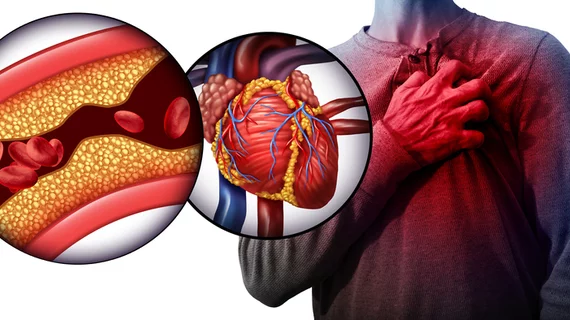RAAS inhibitors help limit adverse outcomes among CAD patients
The use of renin-angiotensin-aldosterone system (RAAS) inhibitors can help patients with coronary artery disease (CAD) lower their risk of a major adverse cardiovascular event (MACE), according to a new study published in Pharmacotherapy.
The analysis included included 165,058 CAD patients from Canada. Sixty-five percent of patients were men, and the mean patient age was 75 years old. Nearly 65% of patients were prescribed RAAS inhibitors.
The authors found that, following four years of follow-up, MACE rate was 17.6% in patients given RAAS inhibitors and 18.2% in patients who were not given RAAS inhibitors. This is a less significant drop than reported in some previous studies, the team observed.
Acute kidney injury (AKI) requiring hospitalization was slightly more common in patients given RAAS inhibitors (1.7%) than patients not given RAAS inhibitors (1.5%).
Overall, the reduction in MACE was found to be higher in patients with a history of myocardial infarction (MI). Also, the rise in AKI risk was lower in patients with a history of MI.
“The overall reduction in MACE is smaller in magnitude than reported in previous clinical trials; however, the absolute risk reduction in MACE outweighed the increase in AKI," wrote lead author Maneesh Sud, MD, with Sunnybrook Health Sciences Center at the University of Toronto, and colleagues. “High-risk patients, such as those with prior MI, benefit the most, with no observed increase in AKI. These results support the continued use of RAAS inhibitors in CAD patients; however, greater benefit may be observed in higher risk patients.”
Sud et al. did note that their study focused on older patients, so the results "may not be generalizable to younger CAD patients."
"However, in prior trials, younger age did not modify the treatment effect of RAAS inhibitors,” they wrote.
Read the full study here.
